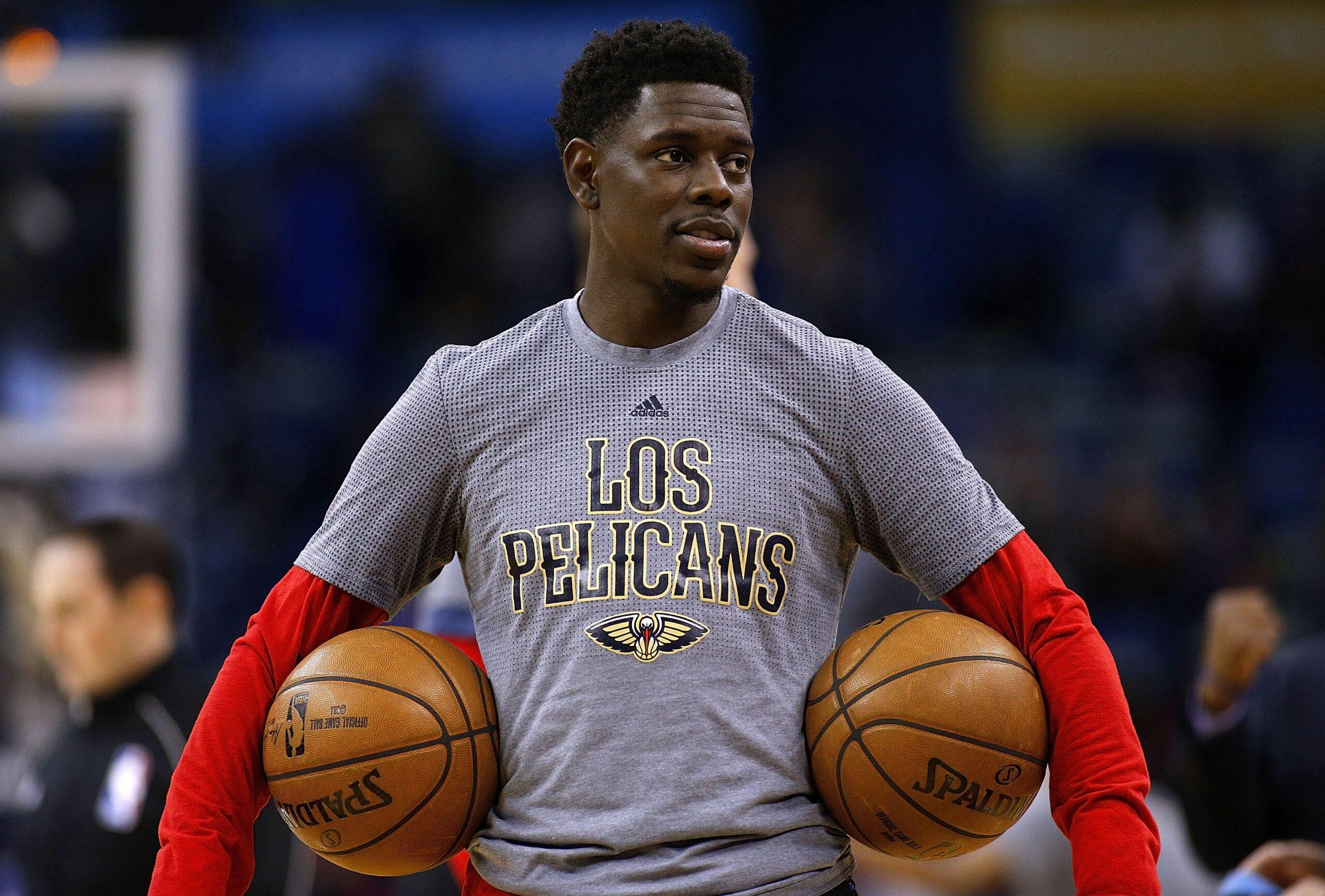
Jrue Holiday had all the leverage in negotiations with the Pelicans. Once they acquired DeMarcus Cousins at the trade deadline, New Orleans had no choice but to offer Holiday a huge contract this offseason. With Anthony Davis and Cousins on the roster, combined with hefty contracts for guys like Solomon Hill, Omer Asik, and and E’Twaun Moore, New Orleans would not have had any cap room to replace Holiday with another top-tier point guard. And without Holiday, they wouldn’t have nearly enough shot-making and playmaking ability on the perimeter to be competitive in the West, even with Cousins and Davis. It was Holiday or nothing for the Pelicans, and he cashed in to the tune of a five-year, $126 million contract.
Holiday’s biggest challenge in New Orleans has been staying on the court. He has appeared in only 62.8 percent (206 out of 328) of their games in his four seasons with the team, although he has been healthier in the past two years. (His only significant absence last season came when he missed the first month to help his wife, former U.S. women’s soccer star Lauren Holiday, recover from brain surgery and childbirth.) Holiday is entering his ninth season in the NBA, but he just turned 27. He will be one year older than George Hill and Kyle Lowry are now when this contract expires, and he is a better bet to be productive than either at the end of their latest deals, but his long history of injuries means Pelicans fans will shudder every time he takes a bad fall. A small-market team can’t afford for a guy making $25 million to go down for any significant amount of time. Just look at what happened to the Grizzlies and Chandler Parsons.
While Holiday isn’t as flashy or explosive as some of the more high-profile point guards on the market, he’s one of the best two-way players at the position in the league. He averaged 15.4 points, 7.3 assists, 3.9 rebounds, and 1.5 steals a game on 45.4 percent shooting last season, while spacing the floor (35.6 percent from 3 on 4.2 attempts per game) and taking care of the ball, with an assist-to-turnover ratio of 2.52-to-1. At 6-foot-4 and 205 pounds with a 6-foot-7 wingspan, Holiday has the size to slide between all three perimeter positions on defense, as well as switch screens and match up with bigger players. He’s a versatile player who doesn’t have any glaring holes in his skill set, and his ability to impact the game without taking a lot of shots should make him effective playing with two high-usage big men like Davis and Cousins.
Now what Alvin Gentry needs to figure out is how effective his big three can be when playing together, and what types of players make the most sense around them. They played only 17 games together last season, and they had a net rating of only plus-2.8 in the 376 minutes where all three were on the floor. There will still be adjusting at the start of next season, since the two most commonly used five-man lineups with all three of their stars featured either Tim Frazier (traded to the Wizards before the draft) or Hollis Thompson (waived after only nine games). There is hope, though: their big three plus E’Twaun Moore and Solomon Hill had a net rating of plus-16.4, although the sample size (80 minutes) is relatively small.

The two biggest questions for New Orleans next season are how well Cousins and Davis can play together, and how effective Cousins can be anchoring lineups when Davis isn’t in. According to the numbers at NBA Wowy, Davis was much more effective without Cousins last season:

Davis got the ball less often when playing with Cousins, and he was less efficient at every area of the floor other than near the rim. The good news is that he got a higher percentage of his shots within three feet of the basket when playing with Cousins (42 percent) than without (28.4 percent), an indication that the presence of another star 7-footer forced defenses to pay less attention to him. Cousins, on the other hand, was about as efficient at the rim (52.5 percent) when playing with Davis as he was from 10–15 feet (50 percent) and behind the 3-point line (40.6 percent).
Based on their body types, it would seem like the sleeker and more nimble Davis would be more effective from the perimeter than the bigger and brawnier Cousins, but it’s actually the reverse. Cousins is a better shooter than Davis, and his inability to get off the ground makes it difficult for him to be as dominant as his Kentucky counterpart in the paint. New Orleans might be best served by making Davis the rim-running 5 and Cousins the stretch 4 when the two are in.
Cousins, unlike Davis, was less effective in New Orleans when he was playing by himself upfront:

The Pelicans with Cousins and without Davis essentially became a down South version of the Kings: an effective offensive team (offensive rating of 112.3) that couldn’t stop anyone to save their lives (defensive rating of 117.3). Cousins wasn’t able to anchor the defense without another traditional big man on the floor, as he was primarily playing in small-ball units with Dante Cunningham, a combo forward, next to him. Holiday, their best defensive guard, played only 52 minutes with Cousins and without Davis, so Gentry may need to adjust his rotation to play Cousins with more defensive-minded personnel. Cousins shot 36 percent from 3 on 5 attempts a game last season and blocked only 1.3 shots per game: He’s an effective perimeter threat who doesn’t protect the rim all that well, so Gentry should think about pairing him with one of his two other centers (Alexis Ajinca and Omer Asik) more often.

New Orleans still has all its cap exceptions to use, but it’s unclear how much money ownership will spend. Stretching Asik, who is set to make an eye-popping $34 million or so over the next three seasons, would help them avoid the luxury tax. Using the stretch provision would cut his cap hit in half and extend it over the next six seasons, but that’s an awful lot of money to swallow. If the Pelicans go back into the market, they should be targeting 3-and-D players on the wings like C.J. Miles and Justin Holiday, Jrue’s older brother, although Jrue’s size makes signing another point guard like Darren Collison a possibility as well. However, without much flexibility to spend in free agency, they might need to get an immediate contribution from the no. 31 pick in this year’s draft, Duke combo guard Frank Jackson. Jackson is a 6-foot-4 scorer with the ability to shoot 3s off the dribble, but he struggled significantly with his decision-making in his only season in college, with almost as many turnovers (49) as assists (61). He’s only 19 years old, and he will have to prove he can survive defensively to get minutes on a team with playoff aspirations.
No matter what other moves the Pelicans are able to make this summer, they will be one of the thinnest teams in the NBA next season. Gentry will have to balance riding Davis and Holiday without exposing them too much to injury, since neither has been particularly healthy in their time in New Orleans.
New Orleans will be paying its top three players approximately $65 million next season, a number which will only go higher if the Pelicans retain Cousins, who is going into the last year of his contract. Meshing the talents of Davis, Cousins, and Holiday won’t be easy, but they will have to fit together nearly perfectly for the Pelicans to have any chance of making noise in the West. They are paying Jrue Holiday to be a star. Now he just has to play like one.

